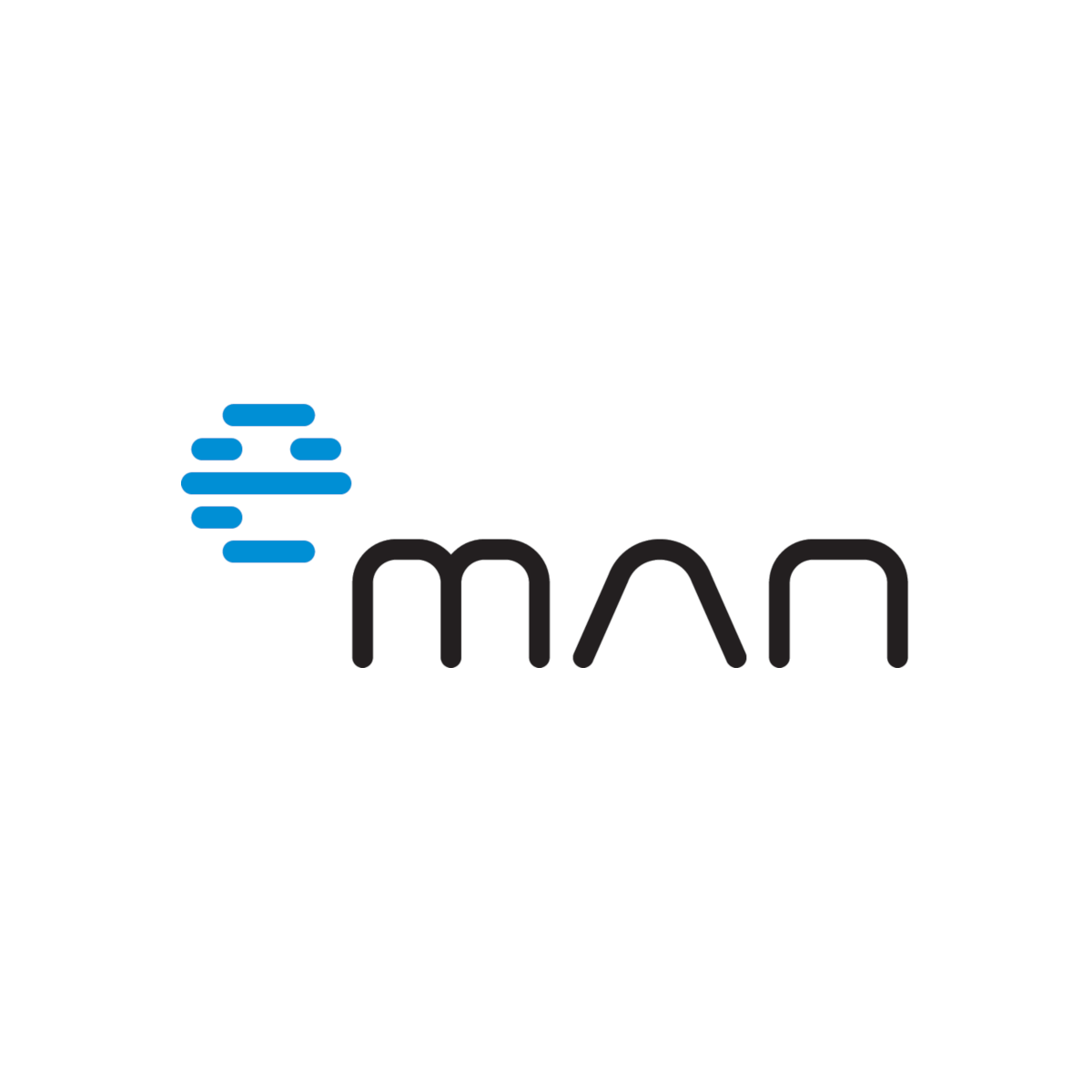Over the years, working on various products, I have encountered gamification from many perspectives. It has become an essential part of digital design, as evidenced by the increasing number of client requests. I often come across recurring questions, mistakes, or misconceptions about gamification. These experiences led me to write this article, which aims to deepen the understanding of gamification and provide insights into its proper application.
Ultimate Guide to Gamification: Best Practices
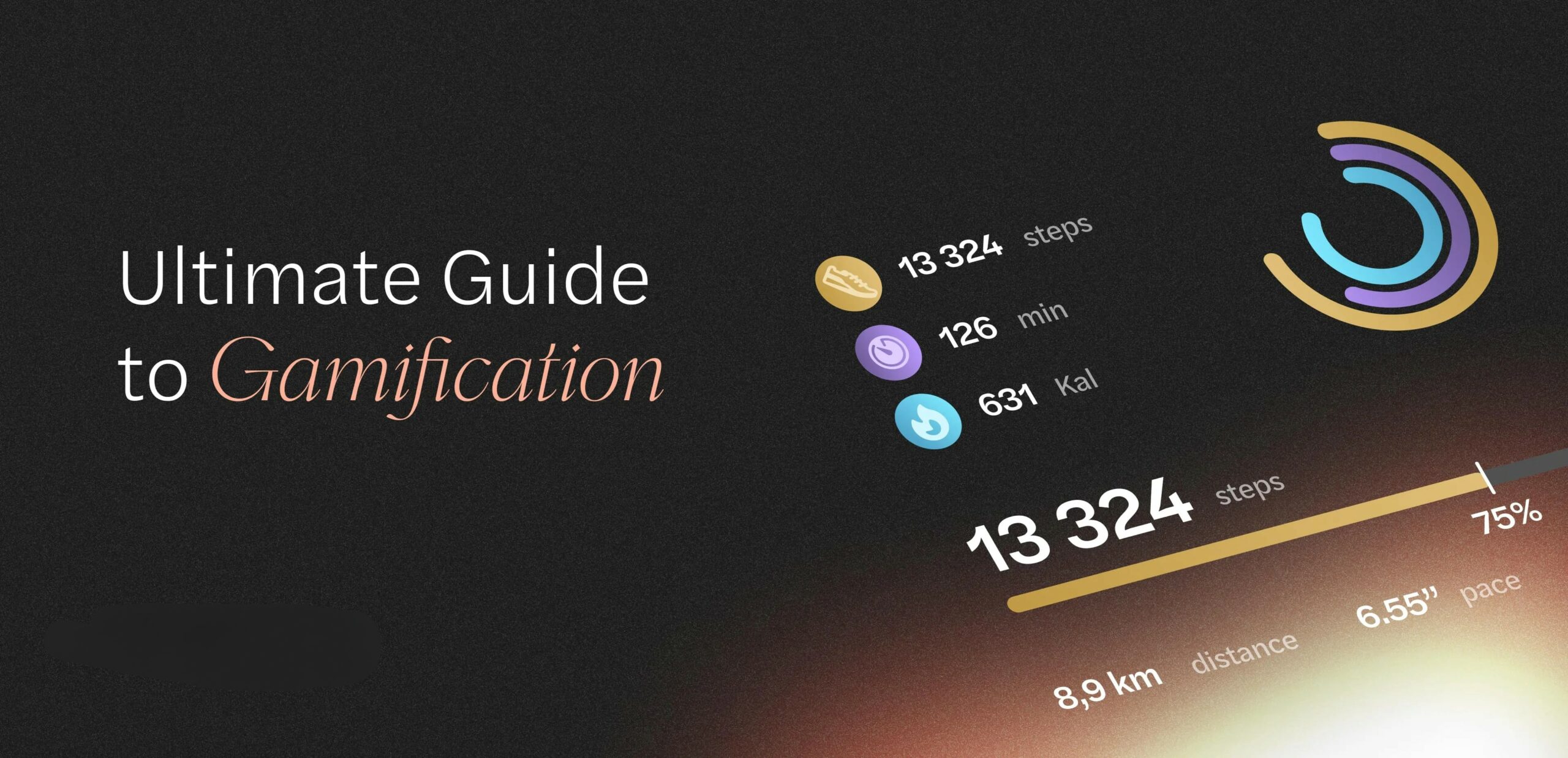
What is Gamification, and why does it work?
Gamification uses game principles and mechanisms in non-game contexts to increase user engagement and motivation. Its power lies in appealing to the natural human desire to complete tasks, compete, and achieve results. Game elements such as points, badges, or leaderboards encourage users to engage more deeply with products and improve their interaction.
To explore the theories supporting gamification, I recommend starting with the concept of flow (Mihaly Csikszentmihalyi) or self-determination theory (Edward L. Deci and Richard Ryan). These theories provide a helpful framework for understanding how gamification motivates and sustains user attention.
Common mistakes in gamification and how to avoid them
One of the biggest mistakes companies make when implementing gamification is ⚠️ relying too heavily on external motivators, such as points or badges. While these elements can be effective in the short term, the risk is that they become the only reason users interact with the product. Effective gamification should appeal to users’ internal motivation — ✅ the desire to do something for the joy of the activity itself, not just for the reward. Offering value to users means going beyond superficial motivators and including meaningful challenges and interactions that support long-term engagement and loyalty.
Another common mistake is ⚠️ not balancing fun with excessive gamification, which can make users feel overwhelmed or annoyed by gamification elements. This is especially important because gamification should enhance the user experience, not overwhelm them. The key to success is finding the ✅ right balance that encourages repeated use of the product or application without discouraging further use.
Key principles of successful gamification
Successful gamification requires a thoughtful approach that respects the needs and preferences of your target audience while effectively serving the project’s goals. By combining the following strategies, you can create gamification that encourages user engagement without burdening them with unnecessary elements.
1. Define gamification goals
Determine what you want to accomplish with gamification. Goals can range from increasing daily user engagement to encouraging specific user behaviours or building and strengthening an online community. ✅ Each goal should be carefully thought out and measurable, such as “increase daily active users by 20% within six months”.
2. Understand your audience
Effective gamification requires a deep understanding of users and their diversity. It’s essential to recognize that different groups may have different preferences and motivations. While some users may seek competitive elements, others may prefer reward systems based on task completion or badge collection. ✅ The key is to offer various gamification options that resonate with many users.
3. Find the right balance
It is critical to balance the introduction of playful elements that drive interest and repeat product use with the risk of gamification being perceived as forced or annoying. A good solution is to allow optional participation for users less interested in gamification. Similarly, ✅ introducing game elements gradually helps users adapt to new features without feeling overwhelmed.
4. Test and iterate
Ensure that gamification elements are regularly tested with real users and that the results of these tests are used for iterative improvement. This process helps ✅ identify and eliminate potential shortcomings, discover elements that are not intuitive or enjoyable for users, and adjust them to better meet their needs and expectations.
Best ideas for gamification elements
Collecting points with attractive rewards
It’s not just about collecting points; the key is to offer valuable, truly motivating rewards. For example, petrol stations can offer refuelling points that can be exchanged for discounts on petrol or free coffee. This not only engages the customer but also encourages them to return.
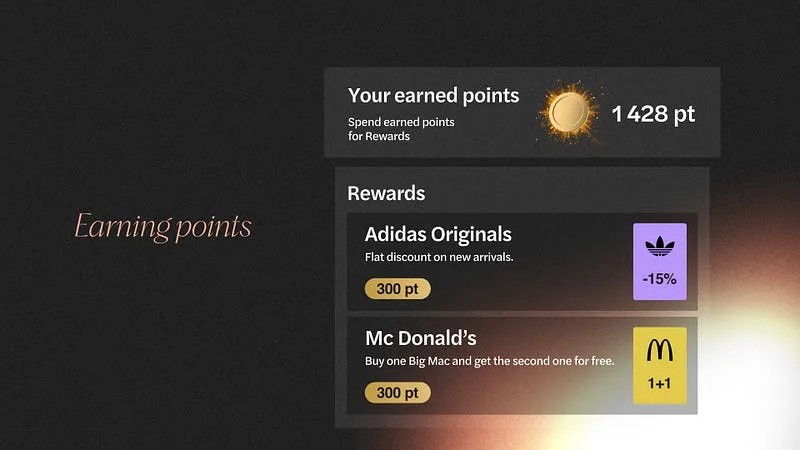
The screenshot shows a gamification interface for earning points and redeeming rewards from various brands.
User account leveling
Create account levels, such as Gold, Silver and Bronze, based on the frequency of purchases or community interaction. This approach encourages loyalty and motivates users to reach higher levels for better rewards and privileges.
For example, on Booking.com, higher levels of user accounts will get you discounts on accommodation. You can use premium content, custom emoticons, avatars, and other bonuses on community platforms like Reddit.

Screenshot showing a gamification interface for user account leveling with profile levels and progress towards higher tiers.
Collecting and completing collections
Including collectables, such as badges for fitness activities on Apple Watch or postcards for places visited in travel apps, can increase user engagement as users aim to “complete the set.”
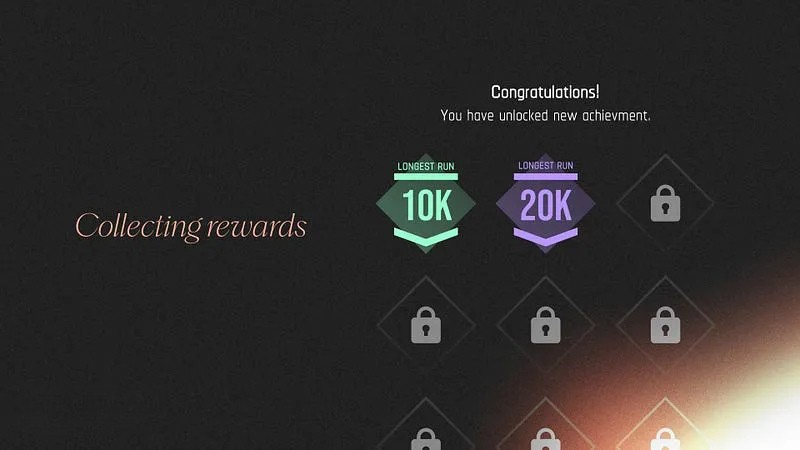
The gamification achievements collection interface shows completed and uncompleted badges, encouraging user progress and engagement.
Loyalty Programs
Classic stamp cards, where every tenth coffee is free, are a straightforward and easy-to-understand example of gamification that encourages regular visits and builds loyalty.
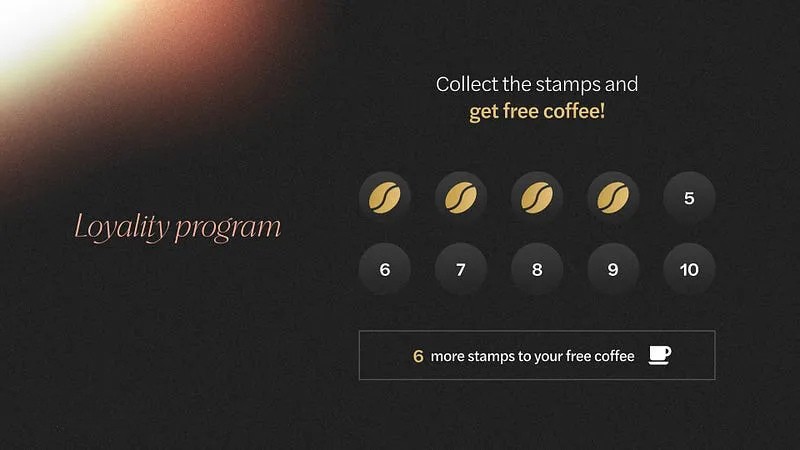
A digital loyalty program card with a gamification concept features coffee cup stamps that track customer visits and reward customers with a free coffee after they collect ten stamps.
Daily challenges
Apps like Duolingo motivate users to learn languages daily with short, achievable challenges that engage and encourage regular participation. The tasks must be easy to complete and should not create too great a sense of obligation.
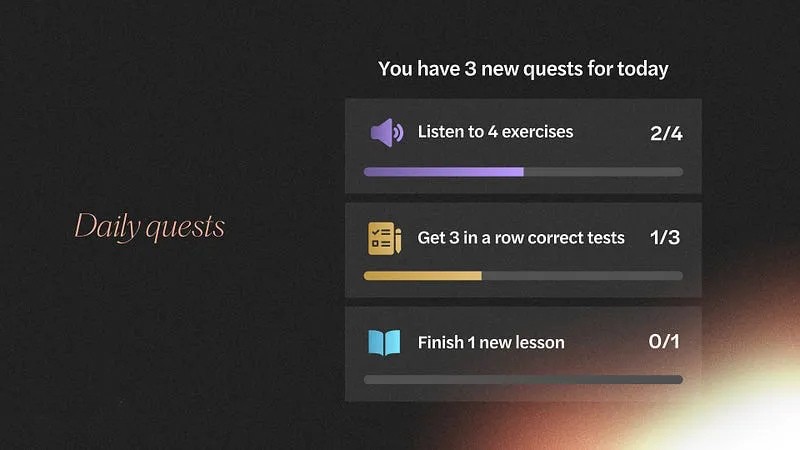
Screenshot of a gamified daily quest interface with active tasks, promoting regular user engagement through achievable short-term challenges.
Leaderboards and peer comparison
Introducing competitive elements such as leaderboards or benchmarking can be a powerful motivator. Segmenting users into activity-based groups is crucial so they can compete with their peers and feel judged. If segmentation is impossible, comparing users to an overall average, such as “you are doing better than 76% of other households,” can be effective.
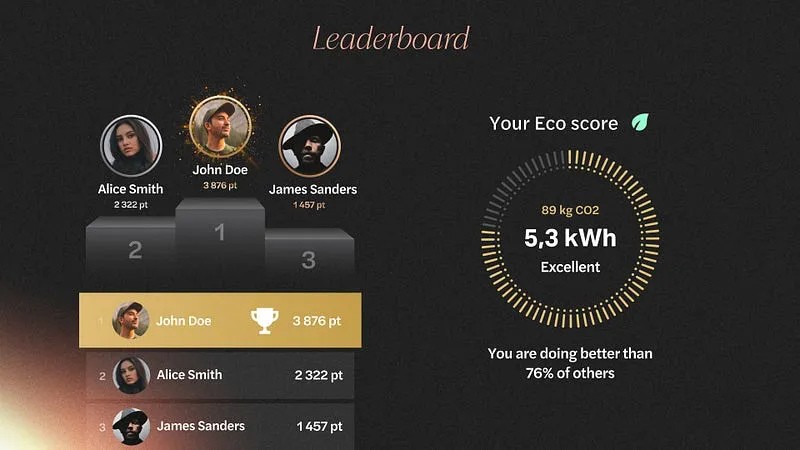
Interactive leaderboard gamification element featuring a user ranking system designed to motivate users by comparing their scores with peers for enhanced engagement.
Personal statistics
Allowing users to regularly track useful personal statistics, such as sleep quality, monthly spending in a finance app, or their car’s fuel consumption for the current month compared to the average. This provides valuable information and motivates users to use the app more often.
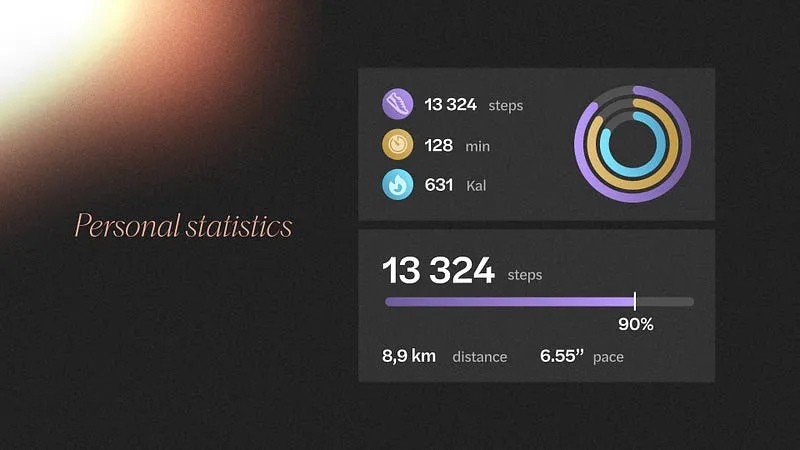
Gamification-centric personal statistics dashboard showcasing a user’s activity metrics, including steps taken, exercise duration, and calories burned, to foster regular app interaction.
Increase retention with daily motivations
To encourage regular app visits, use a mechanism where daily app launches bring the user a significant discount on a randomly selected product. This will create curiosity and encourage users to return daily. Although simple numerical tracking of the days the app has been launched can be effective, adding an interactive element, such as a virtual tree that grows with each launch and dies if the streak is broken, can be even more motivating and add depth to a simple process.
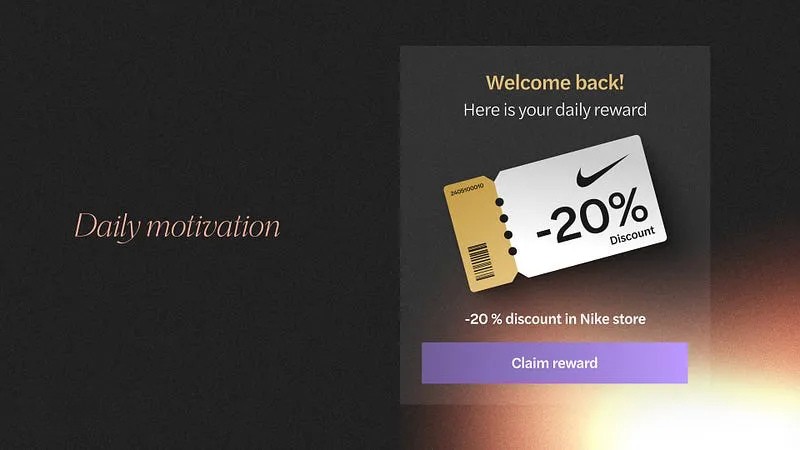
A gamification reward pop-up within an app offers a daily user incentive of a 20% discount at a retail store, designed to boost retention and daily app interaction.
Communication in the product team is critical
Successful implementation of gamification requires integration and collaboration of various departments, each contributing uniquely to the overall strategy. Here is a closer look at the key roles and their contributions:
🎨 Designers: They create the visual and interaction design of gamification elements and ensure they are intuitive and attractive to users. Their job is to keep users engaged and ensure that the design supports gamification objectives.
📣 Marketing: This department makes gamification elements visible and attractive to existing and new users. The marketing team uses gamification to increase product awareness and engage users through advertising and promotional campaigns.
🧠 Product Department / Rewards Department: Responsible for structuring and managing the rewards system. This department ensures that rewards are relevant and sufficiently motivating to support targeted user behaviour.
💵 Finance Department: Plays a key role in ensuring that reward programs are financially sustainable and within the company’s budget. This department helps prevent financial risks associated with overly generous gamification initiatives.
⚙️ Product Managers and Developers: Ensure that gamification elements are technically feasible and adequately integrated into the product. They oversee the product development from design to implementation, ensuring that gamification meets technical requirements and is compatible with other product features.
👫 Internal Communication: Crucial for coordinating between departments and ensuring that all employees are aware of gamification strategies and their development. Effective internal communication helps create a consistent approach to gamification across the organisation.
Want to start your gamification project?
Share your experiences with gamification – what has worked well for you, and what problems have you encountered? Do you have any other methods or examples of gamification that weren’t mentioned in this article? You can try an example of gamification we’ve implemented, for instance, in myPPL, an app we’re developing for PPL.
If you are interested in a consultation on gamification or developing a mobile or web application with gamification elements, please contact us.
